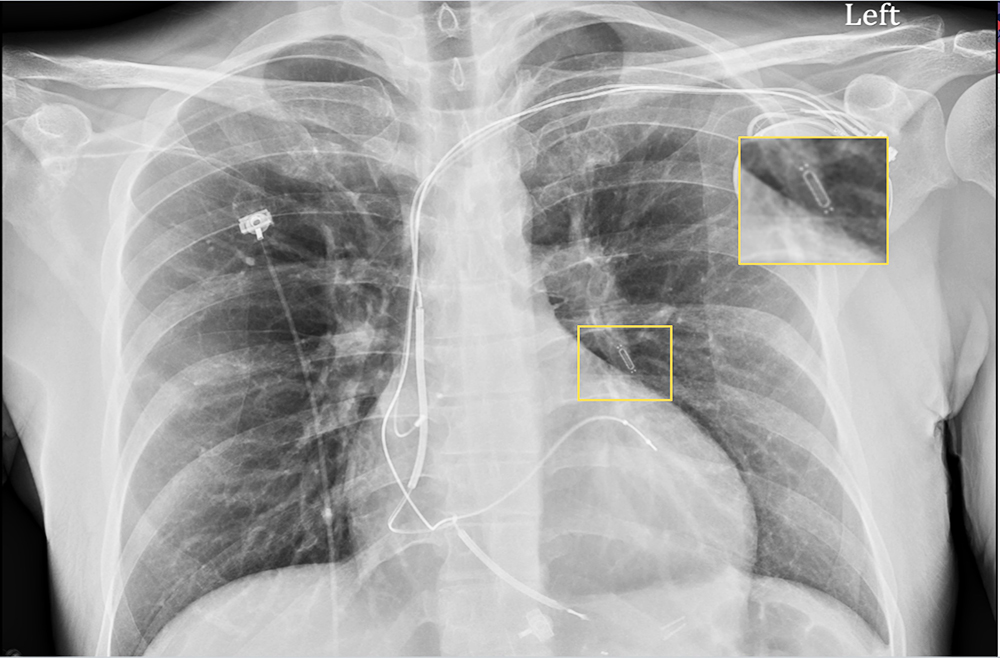The primary efficacy end point of HF. HF is a common late cardiovascular complication in adult CHD necessitating better understanding of IHM application in this population.
Remon Medical S Implantable Pulmonary Pressure Sensor 1997 2007 The World Of Implantable Devices
The CardioMEMS HF System Abbott is an ambulatory implantable.

Implantable pulmonary artery pressure monitor. CardioMEMS is the first wireless implantable monitor that continuously measures pulmonary arterial pressure an early indicator of the onset of worsening heart failure approved by the US. Ambulatory pulmonary artery PA pressure monitoring with implantable hemodynamic monitors IHMs has been shown to reduce HFrelated hospital admissions in nonCHD populations. It is a miniature percutaneous LAP sensor that is robust wireless and leadless and includes a novel drift compensation mechanism.
Pulmonary arterial hypertension PAH is a chronic disease that ultimately progresses to right-sided heart failure HF and death. Food and Drug Administration FDA. Listing a study does not mean it has been evaluated by the US.
The system provides daily PA pressure measurements including systolic diastolic and mean PA pressures. The V-LAP system Vectorious Medical Technologies Tel Aviv Israel is a next generation of implantable LAP monitoring systems and uses advanced application-specific integrated circuitbased technologies. Read our disclaimer for details.
Ambulatory pulmonary artery PA pressure monitoring with implantable hemodynamic monitors IHMs has been shown to reduce HF-related hospital admissions in non-CHD populations. Currently has its latest wireless MEMS device in clinical trials -- an implantable heart failure monitor designed to measure pulmonary artery pressure. Implantable Wireless Pulmonary Artery Pressure Monitoring.
However the burden of commonly used methods to assess RV hemodynamics such as right heart catheterization precludes frequent monitoring. High pulmonary artery pressure is associated with fluid build-up in the lungs that occurs with the progression of heart failure. A low-power capacitively-coupled instrumentation amplifier CCIA is developed in order to boost the amplitude of the bridge sensor to the input range of the analog-to-digital converter ADC.
Monitoring Pulmonary Artery Pressure by Implantable Device Responding to Ultrasonic Signal PAPIRUS III PAPIRUSIII The safety and scientific validity of this study is the responsibility of the study sponsor and investigators. This paper presents an energy-efficient analog front-end circuit to monitor the pulmonary artery pressure PAP with piezoresistive pressure sensors. After implant subjects were randomly assigned in single-blind fashion to a treatment group in whom daily uploaded pressures were used in a treatment strategy for HF management or to a control group in whom standard HF management included weight-monitoring and pressures were uploaded but not available for investigator use.
Clinical monitoring and treatment in the community usually by nurses may reduce the incidence of complications and subsequent hospitalisationMonitoring pulmonary artery pressure using an implantable device has been proposed as a method of monitoring the severity of heart failure and to provide early detection of worsening cardiac function. The PAPIRUS Pulmonary Artery Pressure by Implantable device Responding to Ultrasonic Signal II trial was a prospective. To evaluate the feasibility and safety of home monitoring of chronic heart failure CHF patients using acoustic wireless communication with an implant directly measuring pulmonary artery PA pressures.
Close monitoring of pulmonary artery pressure PAP and right ventricular RV function allows clinicians to appropriately guide therapy. The 1f noise and input-referred. The implanted device measures and monitors daily pulmonary artery PA pressure.
Insertion of implantable pulmonary artery pressure monitors is usually done under local anaesthesia. Monitoring of pulmonary artery pressures using a wireless implantable haemodynamic monitoring system CardioMEMS may be considered in symptomatic patients with HF with previous HF hospitalization in order to reduce the risk of recurrent HF hospitalization. Although other devices that.
Remotely guide outpatient heart failure HF therapy including implantable wireless pulmonary artery pressure monitoring egCardioMEMS. The system includes a dime sized PA sensor that is permanently implanted in the pulmonary artery via fluoroscopy-guided right-heart catheterization a transvenous catheter. The data is used by physicians for heart failure management with the goal of reducing heart failure hospitalizations.
Using a percutaneous approach commonly via the femoral vein a passive radiofrequency sensor without batteries or leads is implanted into a distal branch of the pulmonary artery with radiological guidance. HF is a common late cardiovascular complication in adult CHD necessitating better understanding of IHM application in this population. A recently approved implantable wireless pulmonary artery pressure remote monitor the CardioMEMS HF System has been shown to be effective in reducing hospitalizations among New York Heart Association NYHA class III HF patients.
An implantable pulmonary artery pressure monitor is a small electronic device that is inserted into the pulmonary artery via cardiac catheterization monitored remotely and used in the management of congestive heart failure 1. The sensor is anchored within the artery.
